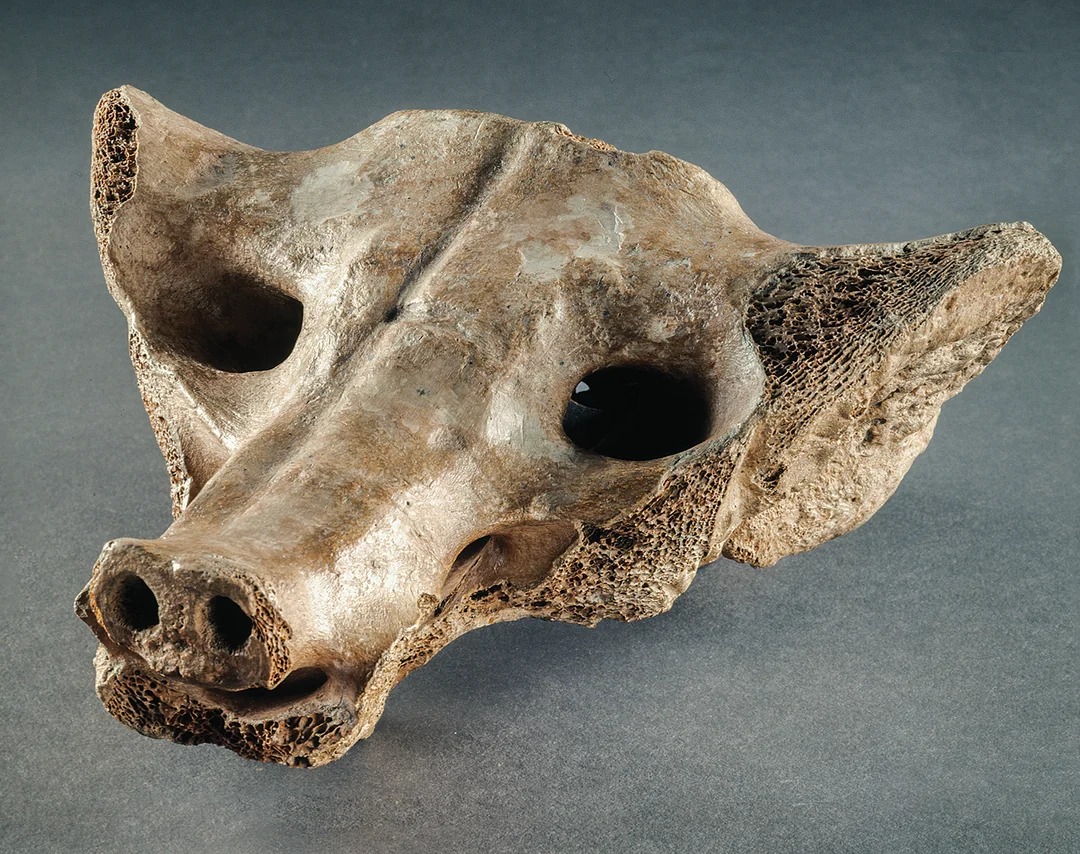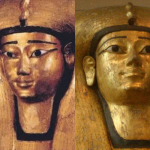The Sacrum 𝘉𝘰𝘯𝘦 of Tequixquiac
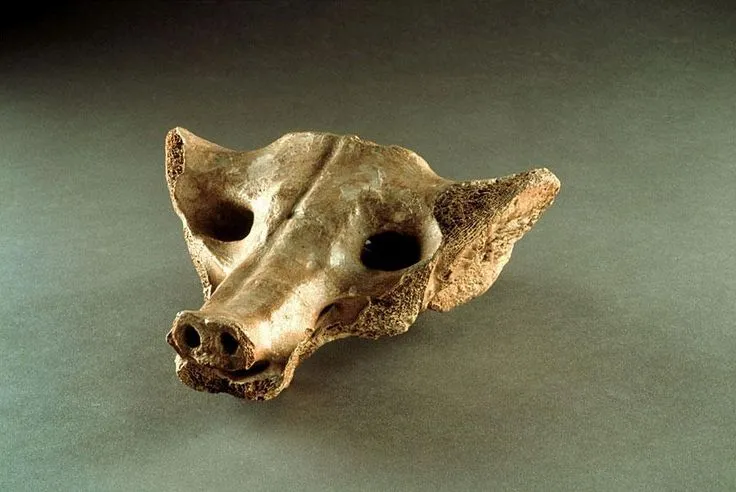
The Sacrum Bone of Tequixquiac, discovered in Mexico, is a remarkable example of early Paleo-Indian art and one of the oldest known sculptures from the Americas.
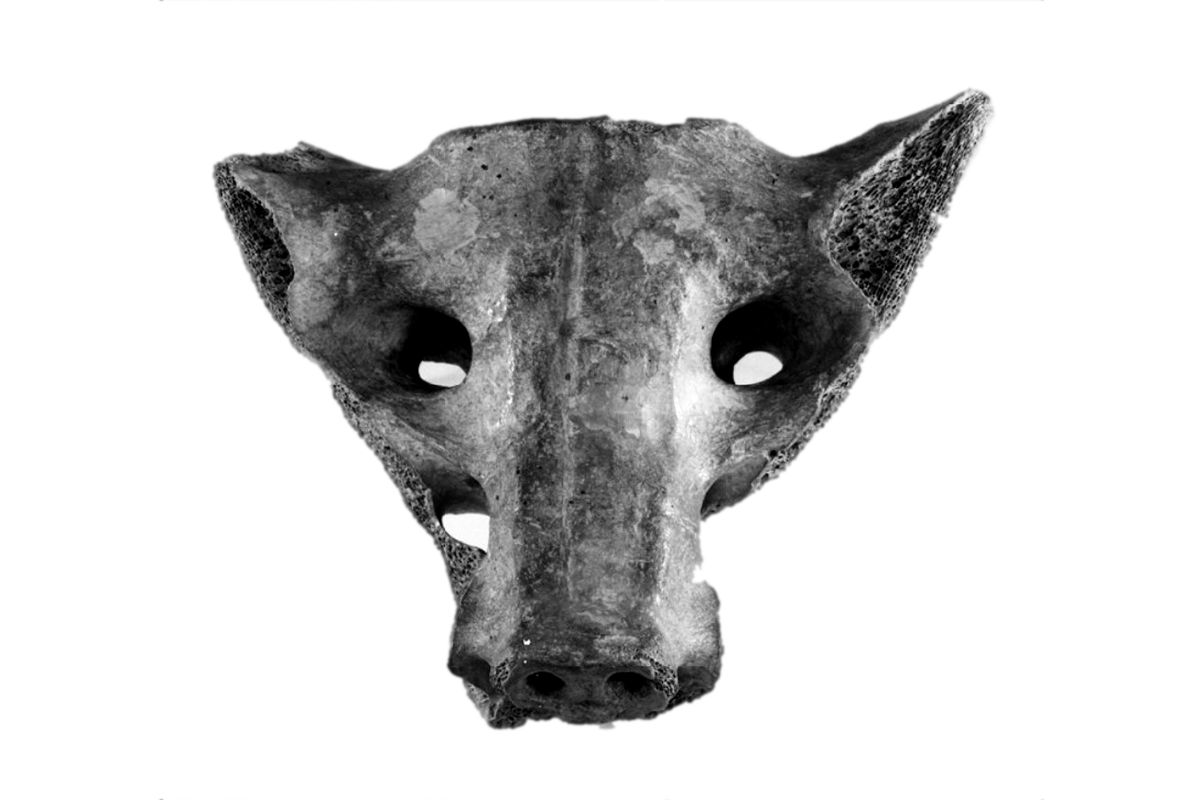
Carved from the sacrum—a pelvic bone—of a prehistoric camel, this artifact depicts a canine figure and demonstrates the symbolic and artistic sensibilities of Pleistocene-era humans. Dating from approximately 14,000 to 7,000 BCE, the sculpture highlights the ingenuity of early inhabitants in transforming natural materials into meaningful representations, possibly for ritual or spiritual purposes.
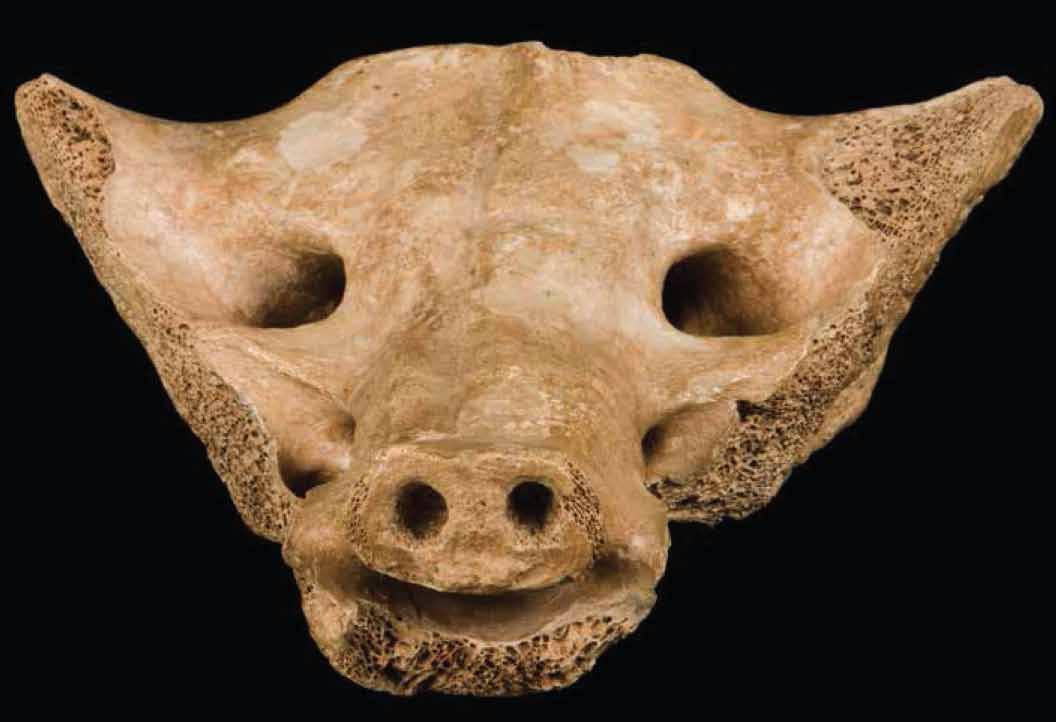
Its careful shaping and the selection of a sacrum bone, which may have held symbolic significance, reflect both technical skill and a deep connection to the natural and animal world. The Tequixquiac Sacrum thus provides invaluable insight into the cultural and artistic expressions of North America’s earliest peoples.
